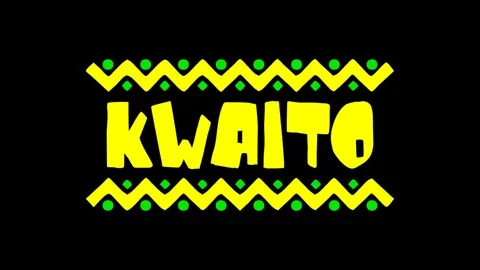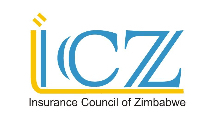
BY TATIRA ZWINOIRA
“THERE are winners and losers,” said Information permanent secretary Ndavaningi Mangwana about the controversial ruling made by the Supreme Court of Zimbabwe last month which allows for the settling of US debts, acquired before February 22, 2019, in ZWL at a 1:1 rate.
The Supreme Court ruling upheld Statutory Instrument (SI) 33 of 2019 promulgated in February 2019 that allowed for the settling of US$ debt in ZWL at parity.
The ruling marked the second time in Zimbabwe’s history that the value of earnings, assets and debts have been wiped in one fell swoop, the first being the abandonment of the ZWL for a multi-currency regime in 2008.
Property Developers In response to questions by NewsDay Business, Real Estate Institute of Zimbabwe president, Alexander Millin, said property developers would negatively be impacted.
“For property developers who may have sold properties off plan on instalments this could impact negatively on firstly the cash flows for the project and the developer’s ability to successfully complete infrastructure works,” he said.
“Any shrinkage in cash flow and or depletion of profit levels will result in developers being averse to carrying out further projects. Some projects may be aborted. This could result in a decrease in supply of property stock.”
He said properties sold in instalments could be affected particularly where the buyer has failed to honour the regular instalments.
- Chamisa under fire over US$120K donation
- Mavhunga puts DeMbare into Chibuku quarterfinals
- Pension funds bet on Cabora Bassa oilfields
- Councils defy govt fire tender directive
Keep Reading
“This means that such transactions may be terminated, albeit the seller will have to carry the loss as the arrears will be settled on one to one basis,” Millin added.
At an FBC analysts briefing last year, the financial group’s chief executive officer John Mushayavanhu revealed that they were incurring significant losses on their mortgaging business.
He complained that this was due to clients settling their mortgages in ZWL despite taking out the mortgage in US dollars, taking advantage of SI 33 of 2019.
So, suppose a person owed FBC US$10 000, they could now settle it as ZWL$10 000 or RTGS$10 000 as was the case that time. What this shows is that SI 33 of 2019 is already starting to affect mortgagees and property developers. This was at a time when the same legislation introduced the RTGS dollar.
But, unlike SI 142 of 2019 which brought back the ZWL as the sole legal tender, SI 33 of 2019 allowed the RTGS dollar to co-exist with the multi-currency regime allowing the exchange rate to be more controlled.
Dawn Properties reported that during the period January 1 to June 30, 2019, the market was subdued with most banks suspending their mortgage offerings over the conversion challenges.
Property expert Washington Musiiwa concurred that developers would feel the pinch of the Supreme Court ruling as the ZWL is the sole legal tender and as such has been devaluing.
Government creditors According to the Parliament Budget Office, at the end of 2018 government had a domestic debt of US$8,5 billion. The debt was as a result of years of government’s insatiable expenditure that forced it to borrow more from the market to fund its spending. The government funded this expenditure through Treasury Bill issuances and central bank overdrafts.
Following the ruling, the domestic debt can be settled by paying ZWL$8,5 billion, meaning, the Supreme Court ruling has essentially wiped off US$8,02 billion of government debt in real terms.
This essentially leaves government with a domestic bill of US$480 million to pay which translates to ZWL$8,6 billion.
But, when asked if this was theft, Mangwana said: “You ask a question of whether it (Supreme Court ruling) has affected domestic debt? Yes. Some of could have been affected but again government is also owed money, government also owes and has contracts and some have already been renegotiated.”
“You may recall, post-February, Cabinet made a decision regarding contracts that were subsisting that those contracts could be renegotiated at the interbank rate. So if you have a decision that has already been made and done, there is no problem.”
He said this was why none of government’s creditors had so far come out to say they were robbed due to these renegotiated contracts prior to SI 33 of 2019.
“It is an assumption that is being made that this may have affected this creditor one way or the other. No, the government owes money for service provision and government has taken a moral position to negotiate with most of them,” Mangwana said.
“If these were tenders that had been won and people were supposed to deliver these were renegotiated taking cognisance of the new context. So, no, government is not robbing anybody, otherwise you would be hearing cries from the streets.”
However, he admitted that for those who owed money, they benefited from the ruling and that those owed money lost.
Financial institutions Other losers from the Supreme Court ruling were financial institutions. In the February 2019 monetary policy statement, total banking sector loans and advances increased by 11,05%, from US$3,80 billion as at December 31, 2017 to US$4,22 billion as at December 31, 2018. The increase was attributed to lending to the productive sector that increased over the year, from 73,64% to 76,01% of total loans as at December 31, 2018 while consumptive lending took 17,75% of the loan book.
The sector that received most of these loans was agriculture at 16,34%, followed by commercial 15,33%, mortgage 11,12%, distribution 10,52%, construction 9,86%, manufacturing 7,68%, mining 3,52%, financial 1,78%, transport 1,06% and communication 0,38%.
The increase in lending led the central bank to report that the loan position of the banking sector had increased risk as the ratio of non-performing loans (NPLs) to total loans rose to 8,25% as at December 30, 2018, from 7,08% as at December 31, 2017.
The debt was owed to 13 banks, three building societies and one savings bank.
Meanwhile, the loan book from microfinance institutions was also up. As at the end of December 2018, the Zimbabwe Association of Microfinance Institutions reported that total loans for the sector amounted US$207,3 million. These loans were mostly taken by micro and small-to-medium enterprises as well as individuals. So, in total, at the end of 2018 financial institutions were owed nearly US$4,3 billion.
Now, with the Supreme Court ruling, this translates to ZWL$4,3 billion or US$240 million, wiping out US$4,06 billion in debt.
The danger with this is that this has left the sector seriously exposed to a higher credit risk.
Zimra Zimra perhaps is the biggest loser of the Supreme Court ruling. In the tax collector’s annual report for 2018, Zimra was owed US$5,03 billion. Of that amount, parastatals owed US$490 780 504,19, councils US$232 281 337,50, private US$3 137 760 073,29, and importers US$77 460 507. The money was owed through unpaid taxes. Now, the Supreme Court ruling has effectively translated the US$5,03 billion to ZWL$5,03 billion, wiping at least US$4,75 billion of the arrears. .
What legal experts say Legal experts have called the Supreme Court ruling “the grand heist”.
In his analysis of the ruling, United Kingdom-based legal scholar Alex Magaisa explained why the ruling was a heist.
“If the debtor owed US$1 million on 21 February 2019, on 23 February 2019, just two days later, they owed just RTGS$1 million. But in the real world, RTGS$1 million was obviously significantly weaker than US$1 million. All because the government said so, via a draconian decree,” he said.
“This is the essence of a command and control approach governance which is the hallmark of the Zimbabwean regime. While it was a boon for debtors, it represented a devastating blow to creditors.”
He added: “The decree was a windfall for debtors whose debts were denominated in US dollars. At the stroke of the presidential pen, their debts had been significantly reduced in US dollar terms because contrary to the government’s command rate, the RTGS was weaker than the US dollar. For the creditors, however, it was a total nightmare”.
Tomorrow we look at the winners of the Supreme Court ruling.











